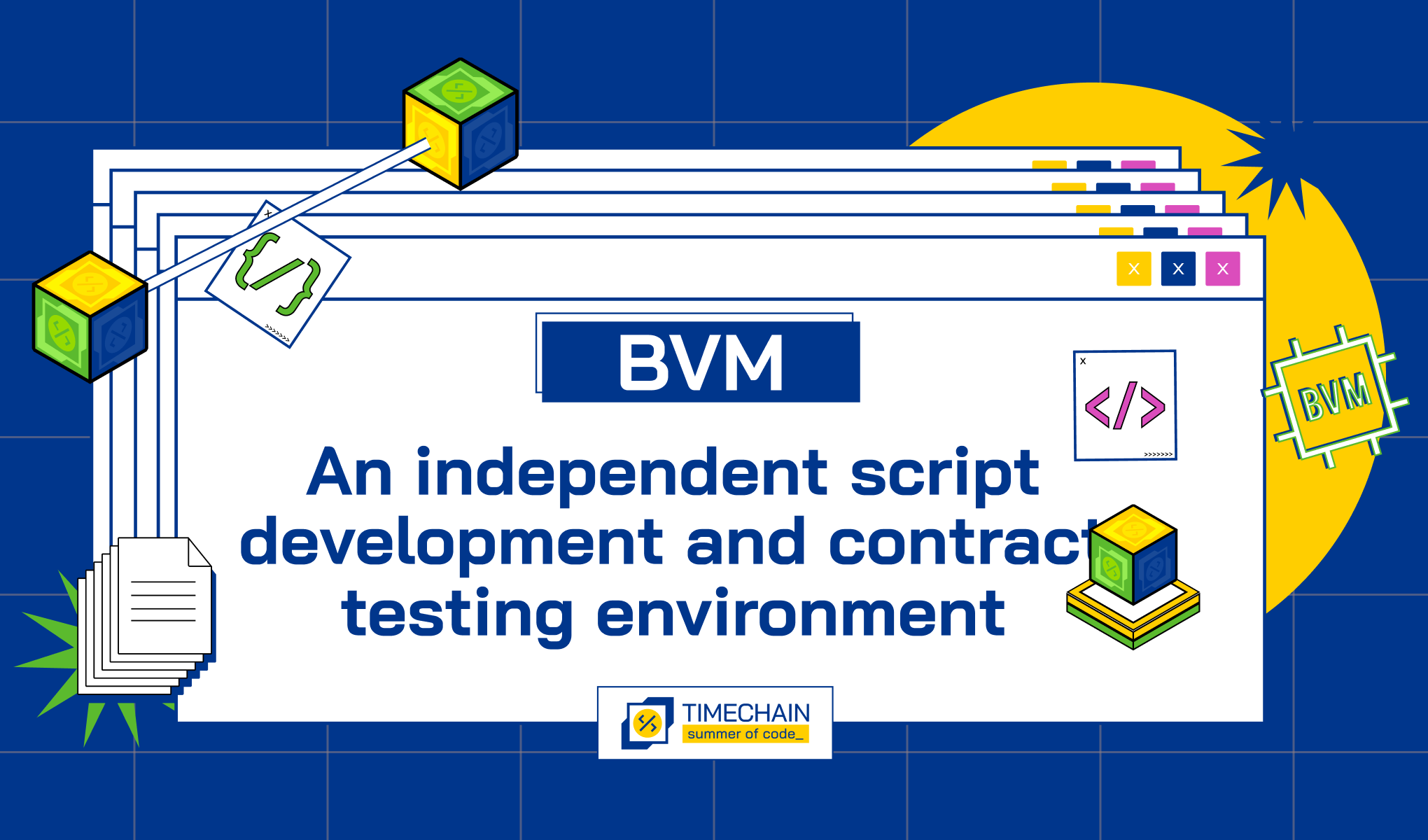The Bitcoin Virtual Machine (BVM) is a robust and versatile virtual machine developed using Rust programming language to transform the Bitcoin SV ecosystem. This project focuses on improving interoperability, flexibility, and developer experience within the BSV network.
Project Overview
The BVM project was divided into two main phases:
1. Phase 1 - Building the Rust BVM for BSV
- Leveraging the power and reliability of Rust to develop a high-performance BVM tailored to the BSV ecosystem.
- Implementing BSV-specific requirements, such as opcode handling, script execution, transaction validation, and block verification.
2. Phase 2 - Enhancing the Interoperability and Versatility of Rust BVM
- Integrating cross-chain functionality to enable interoperability with other blockchain networks.
- Implementing a modular architecture and plugin system to support custom functionality and ecosystem-specific requirements.
- Exploring the integration of oracles and external data sources to expand the capabilities of BSV applications.
Project Team and Phases
The developer team comprising Ram Ganesh Lankada, Saumya Bharti, Anushree Bondia, and Rahul Guha are engineering students who were passionate and full of zeal to complete the project. Under the guidance of Xiaohui Liu and Rohan Sharan, the developers worked towards ideating and implementing the first-of-its-kind Bitcoin Virtual Machine.
While working on the whitepaper, they researched how to build the rust Bitcoin virtual machine on Bitcoin SV Blockchain. Here is a glimpse of their research before beginning the design and development.
- Understanding the BSV-specific requirements: Analyze the features and capabilities of Bitcoin SV that need to be supported by the Rust BVM including opcode handling, script execution, transaction validation, and block verification.
- Utilizing the rust-sv project: Studying the design and implementation of the rust-sv project to grasp fundamental concepts and structures of a BVM in Rust. Identify areas that can be enhanced or extended to meet the specific needs of the BSV ecosystem.
- Referencing with rust-bitcoin: As there was a Bitcoin-specific rust implementation, the developers could have a strong inference based on the rust-bitcoin. They looked into the underlying architecture of rust-bitcoin & built the rust bvm - but as per the BSV-specific requirements.
- Enhancing code readability & streamlining using Rust DSL for Bitcoin VM: Assessing the DSL's features, expressive power, and ease of use. Determine if any concepts from the DSL could be incorporated into Rust BVM to improve its usability and code quality.
- Making a WASM-based Rust BVM
Use a WASM-based virtual machine. WASM is a portable, high-performance, and secure format for compiling code to the web.
Design and Architecture
The Figma architecture showcases the modular design of the BVM, highlighting its flexibility and extensibility. It also illustrates the integration points with external systems, such as cross-chain protocols and oracle networks, to enable seamless interoperability and access to real-world data.
How does BVM stand out from other Virtual Machines?
The Bitcoin Virtual Machine (BVM) stands out from other virtual machines in several key aspects:
1. Rust-based Implementation: BVM is built using the Rust programming language, which offers several advantages over other languages commonly used for virtual machines. The type system, memory safety guarantees, and concurrency features of Rust make it an ideal choice for developing a secure and efficient virtual machine.
2. Tailored for Bitcoin SV: BVM is designed to cater to the requirements and characteristics of the Bitcoin SV (BSV) ecosystem. It takes into account the unique features and capabilities of BSV, such as its large block sizes, high transaction throughput, and support for complex smart contracts.
3. Modular Architecture: BVM adopts a modular architecture that allows flexibility and extensibility. It provides a plugin system that enables developers to add custom functionality and support for ecosystem-specific requirements. This modular approach makes the BVM adaptable to various use cases and facilitates the integration of new features.
4. Cross-Chain Interoperability: One of the key focuses of the BVM is to enable seamless cross-chain interoperability. By integrating cross-chain functionality, the BVM allows interaction and asset exchange between BSV and other blockchain networks.
5. Integration with External Data Sources: BVM aims to integrate with oracles and external data sources, enabling smart contracts to access and utilize real-world data. This capability expands the range of applications built on the BVM, as it allows smart contracts to interact with off-chain systems and leverage real-time information.
These unique features position the BVM as a robust and versatile platform for building innovative and interoperable applications on the Bitcoin SV network.
Conclusion
The BVM project holds immense potential to transform the Bitcoin SV ecosystem by introducing a powerful and flexible virtual machine. By leveraging the strengths of Rust, the BVM aims to enhance performance, security, and reliability while enabling developers to build innovative and interoperable applications on the BSV network.
The modular architecture and cross-chain functionality of the BVM open up new possibilities for collaboration and synergy with other blockchain networks. This interoperability can foster the growth of the BSV ecosystem, attracting developers and projects from diverse backgrounds.
Furthermore, integrating oracles and external data sources expands the scope of BSV applications, enabling the development of decentralized finance (DeFi), prediction markets, and other data-driven use cases.
As the BVM project continues to evolve and mature, it has the potential to position Bitcoin SV as a leading platform for decentralized applications and smart contracts. With its robust design, extensive documentation, and active community support, BVM will drive innovation and adoption within the BSV ecosystem.
The BVM project has a fully functional website, accessible at https://bvm-website.vercel.app/
